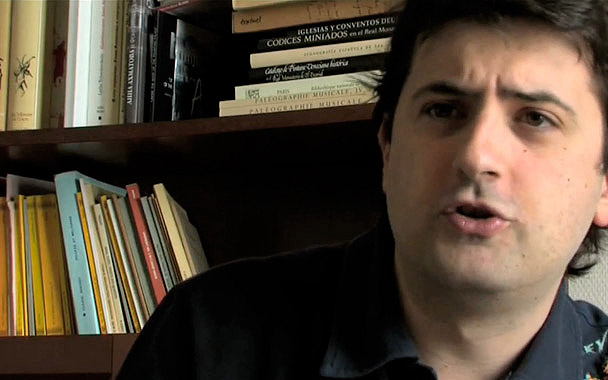Ferran Adrià, whose 50-seat restaurant on a narrow coastal road in Catalonia has been called the best in the world, stood on a stage in Paris on June 11 and addressed the audience in heavily accented French. This was not some gastronomic seminar or culinary demonstration, however; the stage was that of the elegant Salle Pleyel, one of the French capital’s most famous concert halls, and Adrià was flanked by a composer and a conductor, with a full complement of musicians poised for action in the background.
The occasion was the world premiere of Bruno Mantovani’s Le livre des illusions (hommage à Ferran Adrià) (The Book of Illusions: Homage to Ferran Adrià)—a 29-minute work inspired by a 35-course tasting menu the young French-born composer had enjoyed in 2007 at Adrià’s three-star establishment, El Bulli. “I wrote this work for a thousand reasons,” Mantovani told me before the performance. “I’m absolutely mad for gastronomy, to begin with. And the worlds of music and food seem to me intimately connected, in the immediacy with which both are experienced and the way they can challenge the senses. And remember that musicians often use food metaphors when they speak of their own work—‘spicy’ harmony, ‘acid’ orchestration, and so on. When I ate at El Bulli, I thought of my meal at once in musical terms and made notes about everything I ate. I had written a piece earlier inspired by a wine tasting, but this was the first time I had used food.”
Le livre des illusions was commissioned by the Orchestre de Paris and IRCAM, the electronic music institute associated with the Centre Pompidou, and its performance, under the direction of Jean Deroyer, was a historic occasion for reasons even beyond the culinary tie-in: It was the first time that the orchestra and an IRCAM ensemble had shared a stage, mixing electronic and conventional sounds. Before Mantovani’s work was played (the concert had begun with pieces by Luciano Berio and Anton Webern), he, Deroyer, and Adrià took the stage to explain a bit about the music and its sources—Adrià quickly described the origins and structure of several dishes—with illustrations by the musicians. In evoking the first dish, Adrià’s famous “spherified” olives (which are olive-shaped spheres of pure olive essence encased in a skin of solidified olive juice), Mantovani said “The olive explodes when you bite it. Thus the orchestra begins with an explosion” (cue a richly textured orchestral detonation trailing off with an electronic rattle). “But then the olive oil floods your mouth.” (Cue a dissonant audible skein of slushing and flowing.) “Then we put the two together.” (Detonation, rattle, slushing, flowing.) Similar demonstrations were given for two other items, risotto of grapefruit and sesame sponge. “I have to thank Ferran for having constructed so long a menu,” said Mantovani at last. “There aren’t many chefs whose menus I could write an entire composition about.” Adrià in turn responded, “It’s an honor for me to know that our daily work, our creative effort, can be the source of inspiration for an artist.”
“Bon appétit,” said Mantovani before he and Adrià left the stage, “et bon écoute” (good listening). Then came the composition.
It was, for those not used to listening to contemporary orchestral music, with or without electronic garnish, probably pretty tough going (and some listeners later noted that they would have enjoyed it more if the 35 sections had been separated slightly instead of connected to one another). What did Adrià make of it all? I looked over at him about halfway through the piece. He had his head down and his eyes closed, but there was a firmness in his face that suggested concentration rather than slumber. The next day, he said that he had liked the piece a lot, sounding a little bit surprised at himself. Then he went home to prepare for El Bulli’s seasonal opening five days later.



 Pinterest
Pinterest


